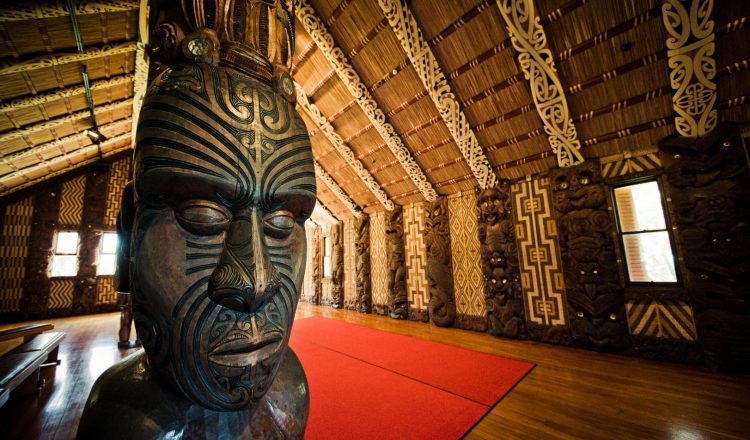마오리 왕 운동
뉴질랜드 해안에 처음 도착한 사람들은 1200년에서 1300년 사이 마오리족 조상이었습니다. 이 뛰어난 항해사들은 바람, 별, 해류를 이용하여 폴리네시아에서부터 항해를 시작했고 섬 전체에 점차 퍼져나가기 시작했습니다. 마오리 사람들은 여러 이위(iwi, 부족)로 나뉘며 이위는 또한 국가,국민으로도 번역할 수 있습니다. 대개 이위는 큰 개념이고 하푸(hapu)라고 불리는 하위 부족들이 많이 있습니다. 하푸는 마오리 사회구조의 가장 기본 단위이며, 대개 500명 정도의 대가족으로 구성됩니다. 같은 이위 내라도 각각의 하푸는 독립적이며, 보통 가족 간에 땅을 공유합니다.
최근 인구 조사 현재 뉴질랜드에서 가장 큰 이위는 다음과 같습니다.
- 응아푸히(Ngapuhi, 125,601)
- 응가티포로우(Ngati Porou, 71,049)
- 응아이 타후(Ngai Tahu, 54,819)
- 와이카토(Waikato, 40,083)
마오리 왕족
마오리 사회 계층의 최상위에는 왕이 있었으며, 각 부족에는 사람들의 고민을 들어주고 어려울 때 구심점이 되어주는 족장이었습니다. 각 부족들은 일정한 땅에 정착해 살아가면서도 토지 소유에 대한 개념이 없었는데 마오리 사람들에게 땅이란 정복해야만 얻을 수 있는 것이었으며 실제로 땅을 사용할 경우에만 부족에게 속한다는 개념이었습니다. 따라서 유럽 정착민들이 몰려와 땅을 구입하고 마을을 세우는데 열을 내자 이때부터 토지는 마오리인들에게 주요 논쟁거리가 되었습니다.
각 부족마다 유럽 사람들의 토지 장악에 대한 반응은 엇갈렸고, 일부는 자신들의 영토를 팔았으며 일부는 이러한 침입에 대해 반대했습니다. 영국-뉴질랜드 합병과 군대를 동원해 위협하자 마오리 족장들은 그들의 터전을 보존하기 위해 나서기 시작했습니다. 분열된 이위들로는 유럽의 승세와 겨룰 수 없다는 것을 깨달았습니다. 그대신 적들의 강력한 군주제에 주목했습니다.
1858년 마오리족은 와이카토 족장을 왕으로 추대했습니다만, 그는 즉위 후 얼마 지나지 않아 사망했고 그의 아들 타히아오(Tawhiao)가 영국과의 전쟁과 작위를 물려받았습니다. 마오리족 통일에 불만을 품은 영국 정부는 1863년 와이카토 땅을 침공해 와이카토 전쟁을 시작했으며 이는 훗날 더 많은 영토를 영국에 넘겨주는 것으로 끝나게 됩니다.
이후 100년 동안, 마오리 왕들은 런던의 영국 왕실과 긴밀한 관계를 유지하며 정치적 전쟁터에서 그들의 잃어버린 땅을 되찾으려고 시도했습니다. 그들은 1975년 최초의 마오리 여왕인 테 아타이랑이카후(Te Atairangikaahu) 여왕에 이르러서야 정부와의 합의에 성과를 보기 시작했습니다. 이는 오늘날 우리가 보고있는 마오리 문화가 진보적 접근을 시작한 큰 발걸음이었습니다. 그녀는 2006년 아들인 투헤이티아(Tuheitia)가 그 뒤를 이을 때까지 40년간 사람들을 이끌며 역대 가장 오래 재위한 군주로 남았습니다. 마오리 왕은 통일된 마오리족에게 상징적 의미를 가지고 있으며, 중요한 의례 역할을 맡고 있습니다.

















































